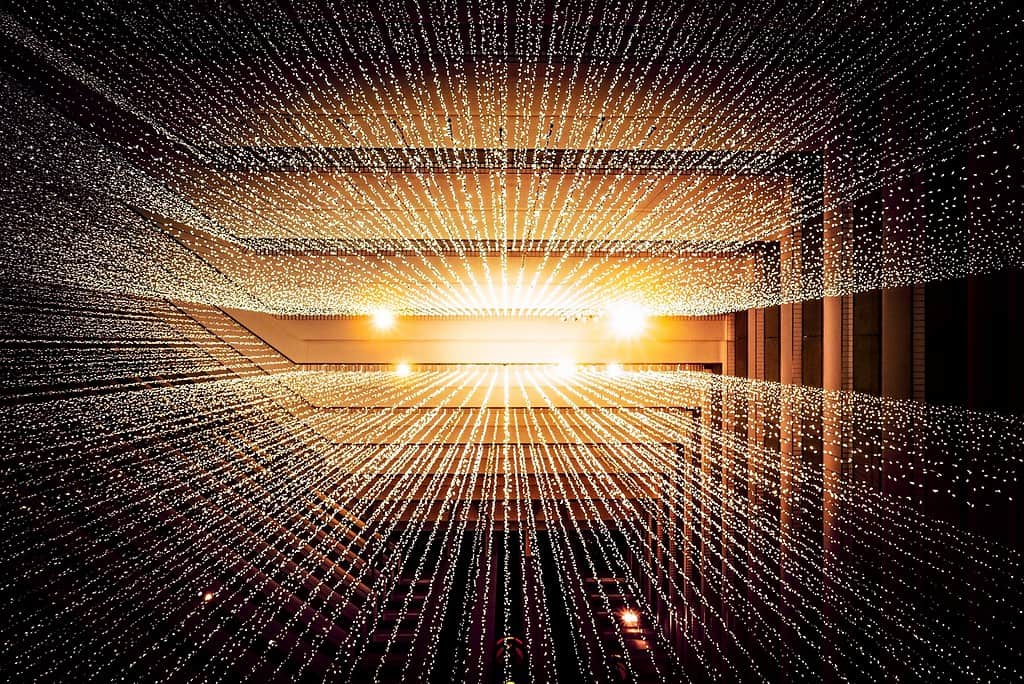The internet is an amazing thing. It’s without a doubt one of the most impactful inventions in history, right there with the mobile phone, antibiotics, and the flushable toilet.
But the internet, for all the advantages it brings, uses up a lot of power. Now, a research consortium in Denmark wants to build a laser-based infrastructure that can transport great volumes of data faster, cheaper, and with less emissions than today.

Billions of people use the internet every day, and quite frankly, it should probably be a basic human right by now. There are around 30 billion internet-connected devices in the world. This has enabled society to truly be more connected than ever. But hidden behind ephemeral words like “cloud” or “data” there are very real, impactful greenhouse gas emissions.
According to some estimates, the IT industry will use 20% of the world’s electricity by 2025 and be responsible for 5.5% of the world’s carbon emissions. The internet itself is only a part of this, but it’s a significant part. The data centers that power the world’s internet are plugged directly into local electricity grids and often use non-renewable sources of electricity, producing a great deal of emissions.
What if we could do it better?
Better internet from Denmark
A Danish project called GreenCOM wants to revamp the country’s internet infrastructure and make it more efficient. The project involves 18 Danish companies, two universities, two institutes, and two industry associations. They say the new platform could lead to reductions of 10% in Denmark’s total electricity consumption.
A key point for them is lasers. Specifically, they want to mature a newly developed chip-based laser technology that has special properties.
“Laser light is the backbone of the internet, and increasing data capacity is imposing ever stronger demands on lasers. They have to generate light at several wavelengths to create different transmission channels in the same fibre. These spectral channels are very close, but they must not overlap, and this means that the laser unit has to be extremely stable to secure a reliable light-wave signal. These requirements generally require bulky, power-consuming and very expensive laser technology,” says Assistant Professor Nicolas Volet, who is heading the Integrated Photonics research group at the Department of Electrical and Computer Engineering at Aarhus University.
“Our contribution to the GreenCOM project is therefore to deliver new laser solutions using integrated photonics. We’ve already demonstrated energy-efficient, chip-based lasers with unprecedented stability, and we therefore expect that, with the innovation platform in the project, we can rapidly get this advanced, cost-effective technology out and make a difference on the internet of the future,” he says.
Of course, it’s not all lasers. Over the next three years, participants in the projects will all pitch in to develop solutions that can enable internet infrastructure to work faster, cheaper, and greener.
The project can be impactful outside of Denmark as well. GreenCOM aims to establish a “fact-based, accredited energy certification of communication technologies and services in the entire value chain” — in other words, they’ll develop a methodology that can be replicated in other parts of the world as well.
Although the internet uses a lot of energy and produces emissions, we need more of it, not less. Increased digitization can help us reduce waste and save large amounts of energy, preventing emissions. But the way it’s designed and used now, if the internet expands, so too will its own carbon footprint. So the key is to make the internet itself more sustainable in the process.
This is especially important because internet usage is already about more than just computers and smartphones. The internet is already useful in agriculture, traffic infrastructure, and all sorts of sensors — the Internet of Things runs on the internet and it’s more important than ever. No doubt, there’s no turning back on the internet; that’s why we need to make it as green as possible and reduce its carbon footprint.









